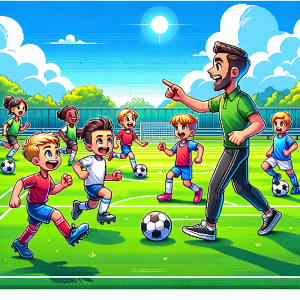
Superstar Bias: A New Perspective on Soccer Performance Evaluations
Imagine watching a highlight reel of the greatest goals from last season’s Premier League. Kevin De Bruyne nets a long-range stunner, and Mohamed Salah weaves through defenders for an unbelievable solo effort. Now, consider this: if you didn’t know their identities, would you still rate their performances as highly?
Superstar Bias: What the Research Says

A team of researchers conducted an experiment with 500 participants who evaluated soccer highlights. The highlights included goals from five superstar players (like Cristiano Ronaldo and Mohamed Salah) and five non-superstars (such as John McGinn and Ollie Watkins). Participants were split into two groups:
A recent study reveals something surprising: superstar soccer players often receive lower performance ratings than their less-famous counterparts—especially when their identities are hidden. This challenges long-held assumptions about how fame and reputation impact evaluations in soccer. For coaches, players, and club leaders, understanding this bias is key to fostering fair evaluations and maximizing team potential.
- Control Group: Watched videos with players clearly visible.
- Treatment Group: Watched videos where players’ identities were obscured using advanced computer-vision technology.
The findings were eye-opening:
- Superstars received lower ratings than non-superstars, even when their identities were visible.
- When player identities were hidden, the ratings for superstars dropped even further, while non-superstars’ ratings stayed consistent or even improved.
These results suggest that fame can create unrealistic expectations for performance. When superstars don’t exceed these expectations, they may be rated more harshly.
Breaking Down the Bias: The Halo Effect in Soccer
The study sheds light on the halo effect, a cognitive bias where our overall impression of someone (e.g., their superstar status) influences how we evaluate their specific actions. In soccer, this means a player’s fame might overshadow their actual performance.
For example:
- Fans might expect every Ronaldo goal to be extraordinary, and anything less feels underwhelming.
- Conversely, when a lesser-known player like Ollie Watkins scores a spectacular goal, it can feel like an unexpected triumph, leading to higher ratings.
This dynamic creates a double-edged sword for superstars: their fame brings attention but also subjects them to harsher scrutiny.
Implications for Soccer Coaching and Player Development
The study’s findings have practical implications for the soccer community. Here’s how coaches, players, and clubs can use this knowledge:
1. Fairer Evaluations in Player Development
Youth players often emulate superstars, but evaluation biases could skew their development. Coaches should focus on objective metrics like skill execution, decision-making, and contribution to team dynamics rather than reputation.
2. Revisiting Talent Identification
Clubs scouting for talent might overlook promising players who lack fame. Using tools like anonymized video evaluations could help identify players based on pure performance rather than perceived status.
3. Building Confidence Among Non-Superstars
Highlighting the potential for non-superstars to shine in evaluations can empower emerging players. Clubs can foster an environment where every player feels valued, regardless of their fame.
Broader Lessons for Team Dynamics and Leadership
The findings also offer insights for managing team dynamics:
- Setting Realistic Expectations: Superstars may feel pressure to meet inflated expectations, affecting their mental health and performance. Transparent communication and fair assessments can help balance these pressures.
- Recognizing Unsung Heroes: Teams often succeed because of contributions from less-visible players. Acknowledging their efforts can improve morale and cohesion.
For example, consider a youth team where the star striker gets most of the praise, while the defender who consistently shuts down opponents goes unnoticed. Recognizing both roles equally can inspire the entire team to perform better.
Takeaways for Soccer Clubs and Organizations
The study highlights actionable steps for clubs:
- Adopt Blind Evaluations: Incorporate anonymized performance reviews during tryouts or team selections to reduce bias.
- Train Coaches to Spot Biases: Workshops on cognitive biases can help coaches evaluate players more objectively.
- Promote Merit-Based Rewards: Shift focus from fame to performance when awarding opportunities, like team captaincy or advanced training sessions.
By addressing superstar bias, soccer organizations can create a more inclusive and meritocratic environment.
Your Turn to Kick It Off
Now it’s your turn to reflect and engage. Share your thoughts in the comments or on social media:
- How do you ensure fair evaluations in your coaching or club management?
- Have you ever seen superstar bias affect team dynamics or player development?
- How might you use blind evaluations in your own soccer context?
Let’s start a conversation about fostering fairness and equity in the beautiful game.
Are you ready to delve deeper into the science and strategy of soccer?
This Week in Soccer offers you a unique blend of expert analysis, engaging infographics, and practical insights. Subscribe to our newsletter and stay ahead of the game with the latest in soccer analytics and coaching strategies. Make the move from spectator to strategist. Subscribe now!



